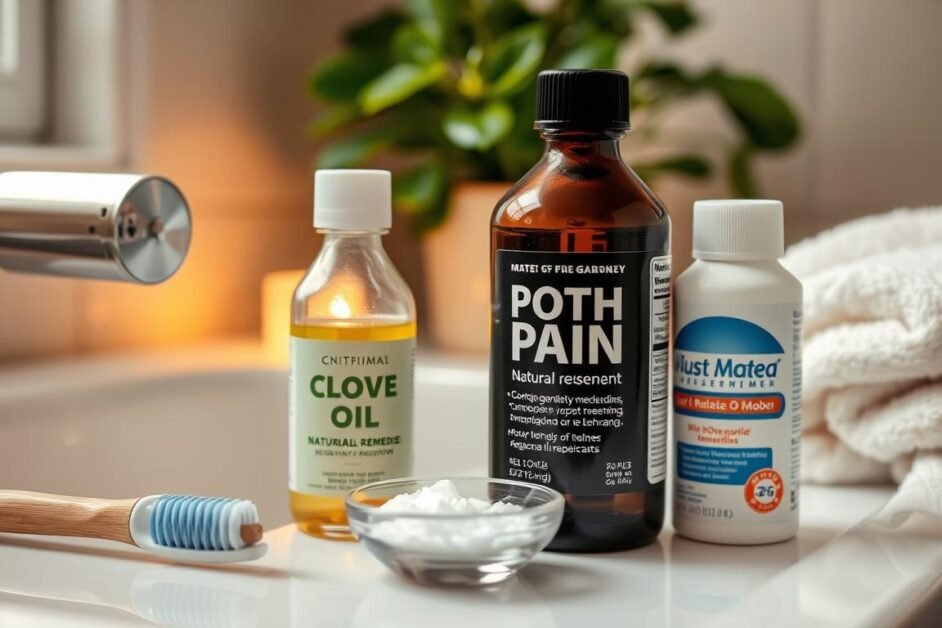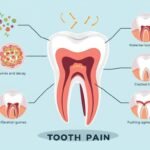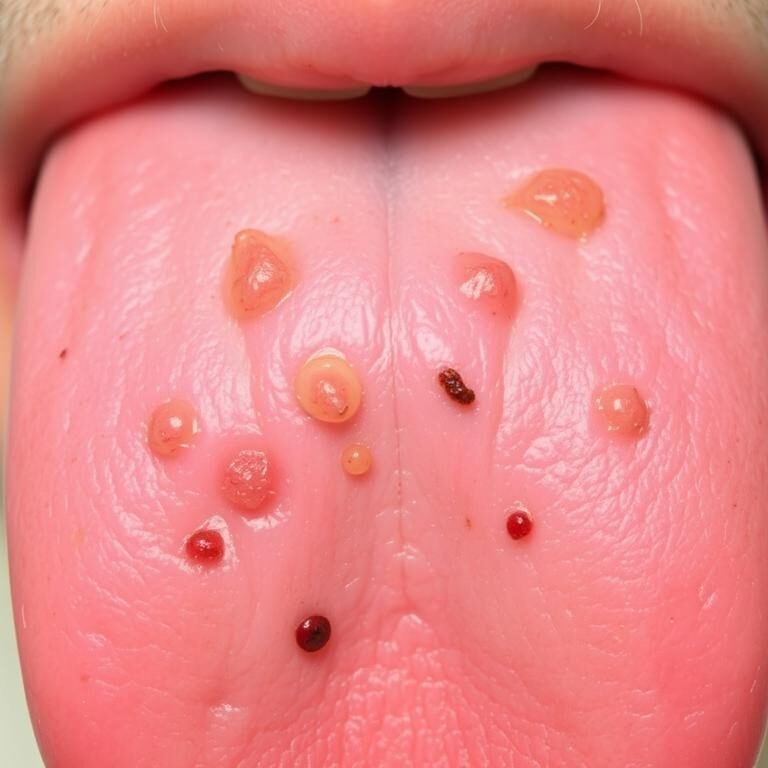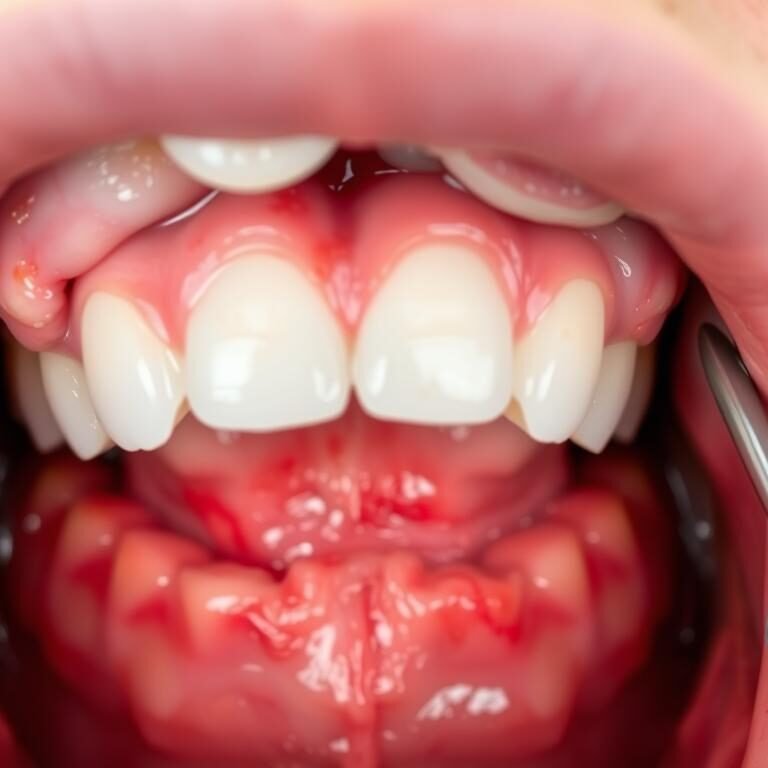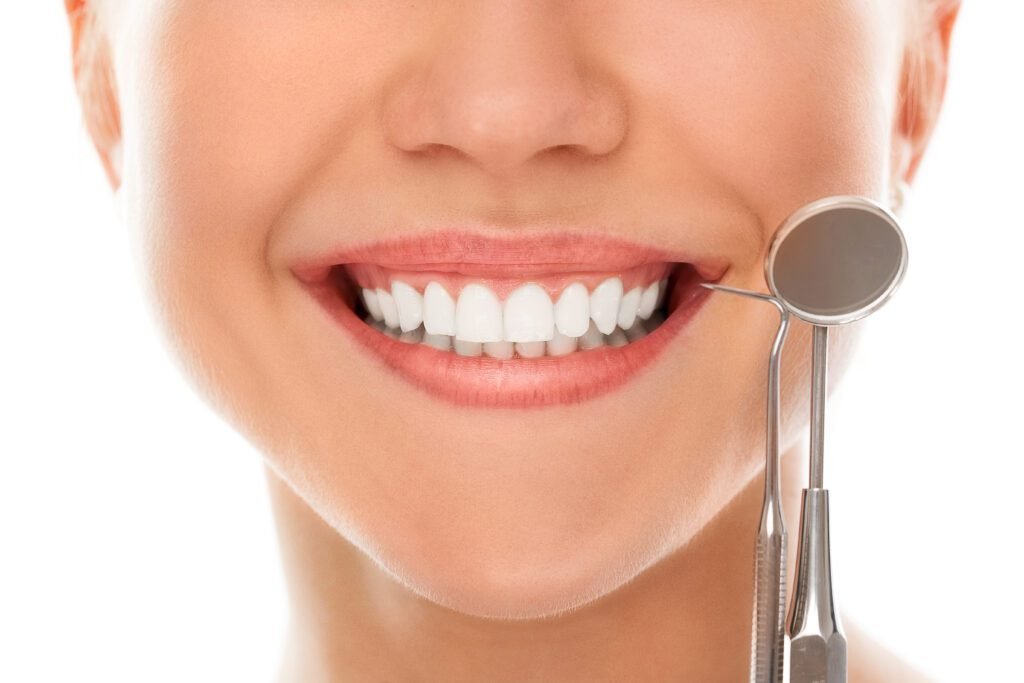Tooth pain can hit you out of nowhere, making your day tough. It’s not just about your mouth; it affects your whole day. I once felt a sharp pain that made simple tasks hard.
This guide aims to help you find relief. You can choose from natural remedies or over-the-counter options. We’ll look at both to help you feel better.
Dental pain is common, with over 40% of adults facing it each year, says the CDC. There are many ways to fight this pain. We’ll explore options like clove oil and modern pain relief.
We want to give you the tools to handle tooth pain. Knowing your options can help you feel better now and prevent future pain. Let’s explore the world of dental health together.
Table of Contents
Understanding Tooth Pain: Conditions and Causes
Tooth pain can come from many sources, like tooth decay, gum disease, tooth fractures, and impacted teeth. Tooth decay is a big problem, caused by plaque that eats away at tooth enamel. Sadly, about 90% of adults will get tooth decay at some point.
When tooth decay is not treated, it can cause a lot of pain. This pain can make everyday activities hard and affect your health.
Gum disease also causes tooth pain. It’s when the gums get inflamed and infected. In the U.S., about 30 million people have toothaches every year because of gum disease. If not treated, it can get worse.
Tooth fractures are another common cause of pain. These happen when teeth crack or chip, often from accidents or grinding teeth. About 13% of adults had severe tooth pain in the last year, often because of fractures.
Impacted teeth, like wisdom teeth, can also cause a lot of pain. These teeth don’t come in properly because there’s not enough room. This can make it hard to tell what’s wrong with your teeth.
| Condition | Symptoms | Treatment Options |
|---|---|---|
| Tooth Decay | Pain when consuming sweets or hot/cold foods | Fillings, root canals |
| Gum Disease | Swollen gums, persistent bad breath | Scaling, root planing |
| Tooth Fracture | Sharp pain during chewing | Crowns, dental bonding |
| Impacted Tooth | Pressure, discomfort in jaw | Extraction |
Knowing why you have tooth pain is key to fixing it. Going to the dentist regularly can help catch problems early. This can keep your teeth and mouth healthy, improving your overall health.

Common Symptoms Associated with Tooth Pain
It’s important to know the toothache symptoms to tackle dental problems early. Symptoms can range from mild to severe pain. Fever often comes with tooth pain, hinting at infection.
Many people notice swollen gums, which might mean an abscess or gum disease. Sensitivity to hot or cold can make eating or drinking painful. Pain when chewing or biting is another sign.
Discomfort that lasts and a foul taste can mean a dental abscess. About 50% of those with tooth pain see swelling, a sign of infection. Knowing these signs is key, as untreated dental issues can lead to severe pain.
Untreated dental caries affect over 13% of adults over 30, causing toothaches. Spotting these toothache symptoms helps find dental care quickly. This is vital for keeping teeth healthy as we age. For more on keeping teeth strong, visit this helpful resource.
Exposed Tooth Roots: Home Treatment Options
Exposed tooth roots often happen when gums pull back, causing pain and sensitivity. Many adults face this problem, with studies showing 70% of those over 30 have gum disease. There are home treatments to help manage these symptoms.
First, avoid acidic foods to treat exposed tooth root home treatment. Acidic foods can make pain worse. Eating foods that are not acidic can help protect the exposed area from more pain.
Using desensitizing toothpaste is also helpful. Studies show these toothpastes can cut sensitivity by 80%. The American Dental Association (ADA) suggests using fluoride toothpaste to strengthen teeth, which is key for those with exposed roots.
Rinsing with warm salt water is another good idea. It helps reduce swelling and eases pain from gum recession. This simple trick can help heal and give temporary relief from root pain.
Good oral hygiene is also important for recovery and less sensitivity. Using a soft-bristled toothbrush helps avoid gum damage. Brushing well can cut plaque by over 30%. Regular dental visits every six months help catch gum recession early, preventing bigger problems.
| Home Treatment Option | Description | Benefits |
|---|---|---|
| Avoid Acidic Foods | Limit consumption of food and drinks that are high in acidity. | Reduces pain and sensitivity, protecting exposed areas. |
| Desensitizing Toothpaste | Utilize toothpaste designed to alleviate tooth sensitivity. | Can reduce sensitivity by up to 80% and strengthens enamel. |
| Warm Salt Water Rinse | Rinse the mouth with a mixture of warm water and salt. | Soothes inflammation and promotes healing in the gums. |
| Proper Oral Hygiene | Employ effective brushing techniques and regular flossing. | Improves overall oral health and reduces plaque buildup. |
| Regular Dental Checkups | Schedule professional cleanings every six months. | Aids in early detection and prevention of gum recession. |
Tooth Pain Relief: Home Remedies for Immediate Comfort
Dealing with tooth pain can really disrupt your day. Luckily, there are home remedies that can offer quick relief. These remedies can help you feel better until you can see a dentist.
Saltwater Rinse for Reducing Inflammation
A saltwater rinse is great for tooth pain and swelling. Mix half a teaspoon of salt in 8 ounces of warm water. This solution is like an antiseptic for your mouth.
Rinsing with it can clean your mouth and reduce swelling. Doing it up to three times a day can help a lot.
Hydrogen Peroxide Mouthwash for Disinfecting
Using a hydrogen peroxide mouthwash is another good option. Mix equal parts water and 3% hydrogen peroxide. This rinse kills bacteria and eases mouth irritation.
But be careful not to swallow it. Used right, it can really help with pain and keep your mouth clean.
Clove Oil and Its Numbing Properties
Clove oil is known for its pain-relieving properties. It has eugenol, a natural painkiller. Apply it to the sore area with a cotton ball.
It can numb the pain for up to 30 minutes. This makes clove oil a top choice for tooth pain relief at home.
| Home Remedy | Benefits | Preparation |
|---|---|---|
| Saltwater Rinse | Reduces inflammation and disinfects | 1/2 tsp salt in 8 oz warm water |
| Hydrogen Peroxide Mouthwash | Kills bacteria, soothes irritation | Equal parts 3% hydrogen peroxide and water |
| Clove Oil | Numbs pain effectively | Apply directly to the sore area with a cotton ball |
Over-the-Counter Solutions for Tooth Pain
Tooth pain can be really upsetting. But, there are many over-the-counter solutions that can help. These include pain relievers and topical anesthetics that work fast. It’s important to know how to use them right to manage pain well.
OTC Pain Relievers: Ibuprofen and Acetaminophen
For tooth pain, you can try over-the-counter pain meds like ibuprofen and acetaminophen. Ibuprofen, found in Advil and Motrin, helps with pain and swelling. Dentists often suggest it for adults because it fights inflammation well.
Acetaminophen, or Tylenol, is good for kids and can also work for adults. It’s a solid choice for pain relief.
Oral Anesthetics: Using Benzocaine and Other Gels
Topical oral anesthetics, like benzocaine, can also help with tooth pain. They numb the area for a while, giving quick relief. But, be careful because benzocaine can cause a rare but serious condition.
This risk is higher in young kids. So, it’s key to follow the instructions on the label carefully. Always talk to a healthcare provider before using these products.
Natural Remedies for Tooth Pain Relief
Looking for natural ways to ease tooth pain is becoming more common. Garlic and coconut oil are two popular choices. Garlic can fight bacteria, while coconut oil may boost your mouth’s health.
Garlic for Antibacterial Benefits
Garlic is famous for its antibacterial powers, thanks to allicin. This helps fight the bacteria causing tooth pain. To use garlic, crush a clove and apply it to the sore area. It might give you quick relief, but don’t forget to keep up with good dental care.
Coconut Oil and Oil Pulling Techniques
Coconut oil oil pulling is a growing trend for better mouth health. It involves swishing coconut oil in your mouth to pull out toxins. It might also help lower plaque, making your teeth cleaner. While it can help with pain, it’s best used as part of a regular dental routine.
| Remedy | Benefits | Application Method |
|---|---|---|
| Garlic | Antibacterial, pain relief | Crushed and applied directly |
| Coconut Oil | Reduces plaque, inflammation | Swirling in mouth (oil pulling) |
For more on natural antibiotics for dental issues, check out the strongest natural antibiotic for tooth infection online.
Understanding Tooth Sensitivity and Its Management
Tooth sensitivity is common, affecting 3% to 57% of people at some point. It’s caused by enamel wear and sensitive gums. This makes eating hot or cold foods painful. Using desensitizing toothpaste can help, making it a top choice for many.
Desensitizing Toothpaste Selection
Choosing the right toothpaste is key for managing tooth sensitivity. Dental experts often suggest Sensodyne. It’s designed to help with sensitive gums and can offer relief for 30% to 50% of users in a few weeks.
How to Help with Tooth Decay
Tooth decay is a big reason for sensitive teeth. Keeping your mouth clean is vital to prevent decay and sensitivity. Here are some tips:
- Brush with fluoride toothpaste twice a day
- Floss regularly to remove plaque
- Limit acidic foods that can damage enamel
- Go for routine dental check-ups to catch problems early
Following these steps can help reduce sensitivity and improve your dental health.
Home Remedies for Infection and Healing
Minor dental infections can often be treated at home. Garlic is a great option because it has allicin. This natural antibiotic fights bacteria and can ease pain. You can chew raw garlic or apply garlic paste to the area.
A warm saltwater rinse is also helpful. It reduces inflammation and aids in healing. Mix half a teaspoon of salt in warm water and rinse several times a day. This helps keep bacteria away.
- Essential Oils: Oils like thyme and tea tree have strong antimicrobial effects. They can help reduce oral infections.
- Hydrogen Peroxide Rinse: For adults, diluting hydrogen peroxide with water can offer antibacterial benefits. But, it’s not safe for kids.
- Onions and Peppermint: Both can give quick relief when chewed. They contain compounds that fight bacteria.
While home remedies can help, see a dentist for persistent infections. Good dental care and regular check-ups are key to avoiding serious problems.
Exploring Homeopathic Treatment Options for Tooth Pain
Homeopathic treatments are a natural way to ease dental pain. They work by boosting the body’s healing powers. Arnica montana helps with pain after dental work, and Hypericum soothes nerves. These remedies can help about 70% of people feel better.
About 20% of those with tooth pain try homeopathy first. This shows more people are looking for natural ways to heal. Getting help from a homeopathic expert can lead to treatments that fit your needs. For example, Chamomilla is good for those who feel pain easily.
Everyone reacts differently to homeopathic remedies. Some might feel worse before they get better. This is why it’s important to get advice from a doctor, if your pain is severe. Homeopathic treatments should be used along with regular dental care.
Knowing about common homeopathic remedies can help you make better choices. Here’s a table that shows some of these remedies and what they’re used for:
| Homeopathic Remedy | Indications |
|---|---|
| Arnica montana | Post-operative pain relief |
| Chamomilla | Relief of pain in hypersensitive individuals |
| Calendula | Managing inflammation and promoting healing |
| Hypericum | Soothing nerve pain |
Adding homeopathic remedies to your dental care can be helpful. It’s great for those who are sensitive or prefer natural methods. But, don’t forget to keep up with good oral hygiene to avoid problems. For tips on getting ready for orthodontic treatment, check out this resource.
Cold Compress: A Quick Relief Technique
A cold compress can quickly ease tooth pain and swelling. Wrap a cold pack in cloth and place it on the sore area. Hold it there for 15-20 minutes. Then, take a 15-minute break before applying it again.
This method works by tightening blood vessels. It numbs the area and reduces pain. Many people find it helpful for tooth pain caused by trauma, providing quick relief.
Using a cold compress with other remedies can help more. Over-the-counter drugs like ibuprofen can reduce pain from infections or swelling. If ibuprofen doesn’t work, acetaminophen is another option, though it doesn’t fight inflammation.
Don’t forget about regular dental care. Going to the dentist regularly can catch problems early. Ignoring tooth pain, with swelling, can lead to serious issues. This might mean needing fillings or even tooth removal.
Mouthwash and Rinses for Dental Pain Management
Mouthwash is a great tool for managing dental pain, like canker sores or tooth sensitivity. Studies show that mouthwashes with antiseptic ingredients can cut bacteria in the mouth by 99% in just 30 seconds. This quick action not only eases pain but also helps the mouth heal faster.
Adding mouthwash for dental pain to your daily oral care routine can really help. Many mouthwashes have hydrogen peroxide, which fights bacteria that cause dental pain. Another good choice is a mouth rinse with Epsom salt for mouth rinse, which may help reduce inflammation and support your mouth’s health.
Using mouthwash regularly can greatly improve your dental hygiene. It can cut plaque buildup by about 20% when used with brushing. Some mouthwashes can even reduce tooth sensitivity by 40% after just 30 days of use.
Dentists also recommend saltwater rinses for their ability to fight inflammation and bacteria. Saltwater can lower dental infection bacteria by 20% with just one rinse. Trying different mouthwashes, like those listed at specific mouthwash recommendations, can help you find the best one for you.
| Type of Rinse | Key Benefits | Effectiveness |
|---|---|---|
| Mouthwash with Antiseptic | Reduces bacteria levels | Up to 99% reduction |
| Saltwater Rinse | Decreases infection bacteria | About 20% after one rinse |
| Hydrogen Peroxide Mouthwash | Contains bacteria-fighting properties | Effective at 3-10% concentrations |
| Epsom Salt Rinse | May reduce inflammation | Potential anti-inflammatory effects |
Using mouthwash regularly can make your mouth healthier and help you recover faster from dental problems. It’s a simple way to ease pain and keep your mouth in good shape.
The Role of Essential Oils in Toothache Relief
Essential oils are becoming popular in dental care because they fight bacteria and reduce swelling. They are used to treat toothaches and gum infections. Tea tree oil is a favorite because it’s very good at fighting oral pathogens.
Using Tea Tree Oil for Gum Infections
Tea tree oil is a strong natural pain reliever. It reduces swelling and fights bacteria. It’s best to mix it with a carrier oil and apply it after talking to a dentist.
Ginger as a Traditional Remedy
Ginger is known for easing tooth pain. It has anti-inflammatory properties that help when chewed or in tea. Ginger can also help with swelling and irritation from dental problems.
Using essential oils daily can help keep your mouth healthy. But, don’t forget to see your dentist regularly. For more toothache remedies, check out this resource.
When to Seek Professional Dental Care
Knowing when to see a dentist is key for good oral health. Over 40% of adults face severe tooth pain each year, as the CDC reports. It’s important to know when you need a dentist’s help.
Severe pain, swelling, or fever mean you need to see a dentist right away. These signs might point to a serious problem that needs a dentist’s care. Also, if your pain lasts more than two days, it’s time to visit a dentist to avoid bigger issues.
Here are some important points to remember:
| Symptom | Action Required |
|---|---|
| Severe tooth pain | See a dentist immediately |
| Swelling in gums or face | Seek urgent dental care |
| Fever accompanying tooth pain | Schedule a dental appointment |
| Pain lasting over two days | Contact your dentist |
For minor pain, home remedies like saltwater rinses or cold compresses can help. But, they’re not a substitute for a dentist’s check-up when pain gets worse. Knowing when to ask for help is essential for the best treatment and recovery.
Preventative Strategies to Avoid Future Toothaches
Toothache prevention is key to a healthy smile and avoiding dental pain. A good oral hygiene routine can greatly reduce tooth discomfort. Here are some strategies to keep you pain-free:
- Brush twice daily: Spend 2 minutes each time using fluoride toothpaste to remove plaque and strengthen enamel.
- Floss daily: Flossing at least once every day helps eliminate food particles and plaque between teeth.
- Regular dental visits: Schedule appointments every 6 to 12 months for professional cleaning and early detection of issues.
- Dietary choices: Limit sugary and carbohydrate-rich foods to decrease the likelihood of tooth decay.
- Teeth as tools: Avoid using teeth for tasks like opening packages, which can lead to chipping or fractures.
Statistics show the importance of toothache prevention. About 50% of toothaches are preventable with proper hygiene and care. Good oral hygiene can also reduce periodontal disease, affecting nearly 20% of adults.
Eat a diet rich in lean proteins, whole grains, dairy, fruits, and vegetables for better oral health. Using fluoridated toothpaste can also help prevent cavities and tooth pain.
Possible Treatment Costs for Tooth Pain Management
The cost of tooth pain management can vary a lot. Routine dental check-ups usually cost between $100 and $300. This depends on how complex the exam is and any cleaning needed.
For more serious problems, like cavities or tooth extractions, costs go up. These treatments can cost hundreds of dollars. It’s good to know these costs to prepare for dental visits.
It’s also important to think about ongoing costs for toothache management. Many dental offices offer payment plans. This helps patients get the care they need without breaking the bank.
Using over-the-counter pain relievers like ibuprofen or acetaminophen can also save money. These can help manage pain at home before seeing a dentist.
Knowing about costs helps prepare for dental visits. Regular dental care can prevent bigger, more expensive problems. It keeps your smile healthy and avoids unexpected expenses.
FAQ
What are some effective home remedies for tooth pain?
To ease tooth pain, try a saltwater rinse or hydrogen peroxide mouthwash. You can also use clove oil on the sore area. Garlic and coconut oil mouthwash offer antibacterial benefits.
How can I relieve tooth sensitivity at home?
For sensitive teeth, use desensitizing toothpaste and avoid acidic foods. Keep your teeth clean. Warm salt water rinses can also help soothe your gums.
What is the best home medicine for tooth pain?
The best remedy varies by person. Saltwater rinse, clove oil, or garlic might work for you. Each has its benefits.
When should I seek professional dental care for tooth pain?
See a dentist for severe pain, long-lasting discomfort, swelling, fever, or bad taste. These signs may mean a serious issue.
How can I drain a gum abscess at home?
Don’t try to drain a gum abscess yourself. It’s best to see a dentist. Warm saltwater rinses can help manage pain until you get professional help.
Does toothpaste help with sensitive teeth?
Yes, desensitizing toothpaste can help. It blocks pain signals to the nerve, reducing sensitivity over time.
Are there any essential oils that can help with tooth pain?
Yes, tea tree oil fights gum infections with its antimicrobial properties. Clove oil numbs toothaches naturally.
Can turmeric be used for tooth pain relief?
Yes, turmeric’s anti-inflammatory properties can help. Make a paste and apply it to the sore area for possible pain relief.
What should I do for a broken tooth at home?
Rinse with warm salt water and use a cold compress to reduce swelling. Then, see a dentist as soon as you can.
What are the symptoms of a dental abscess?
Look out for severe toothache, gum swelling, fever, and sensitivity to hot or cold. Also, watch for foul-tasting discharge.

